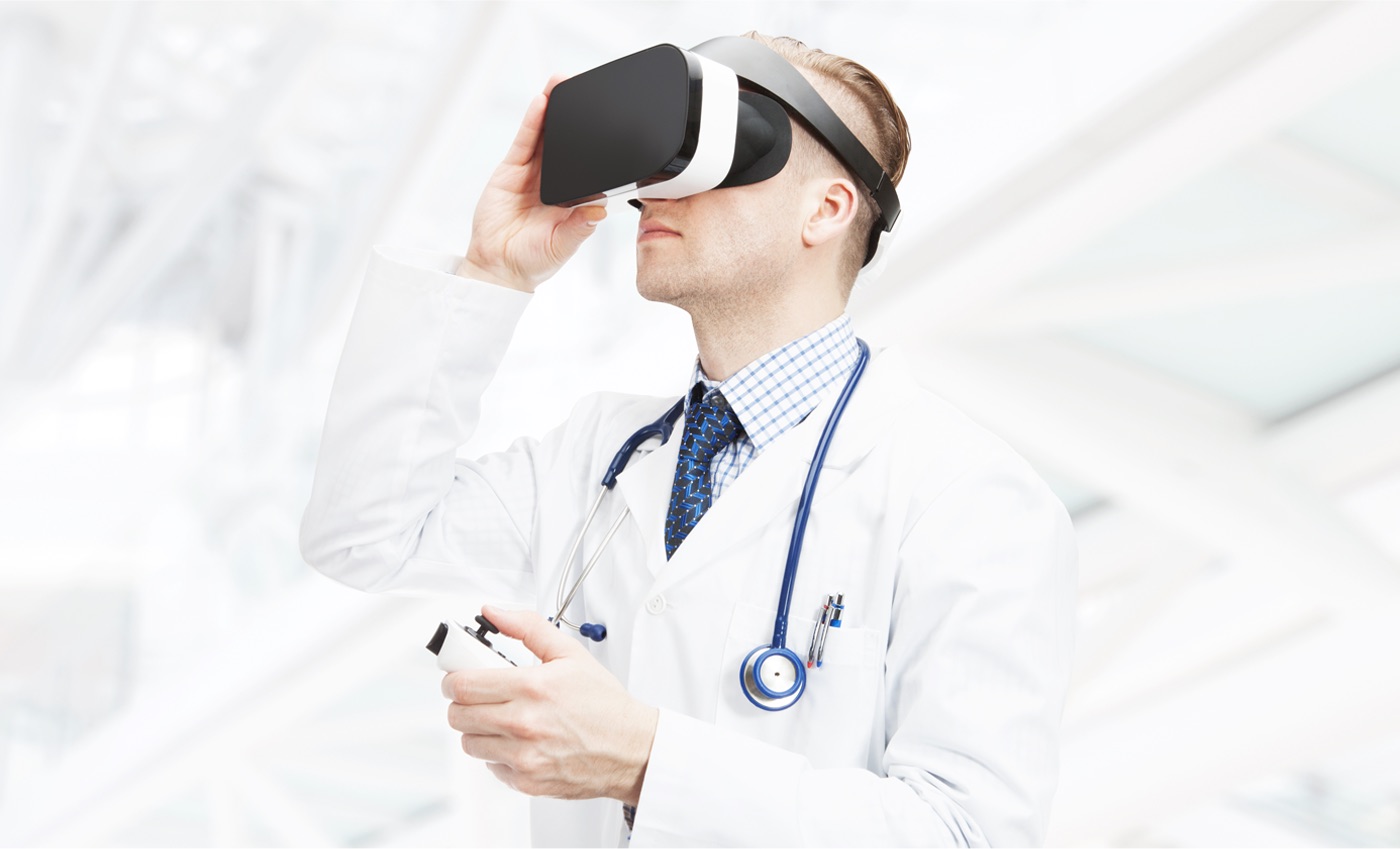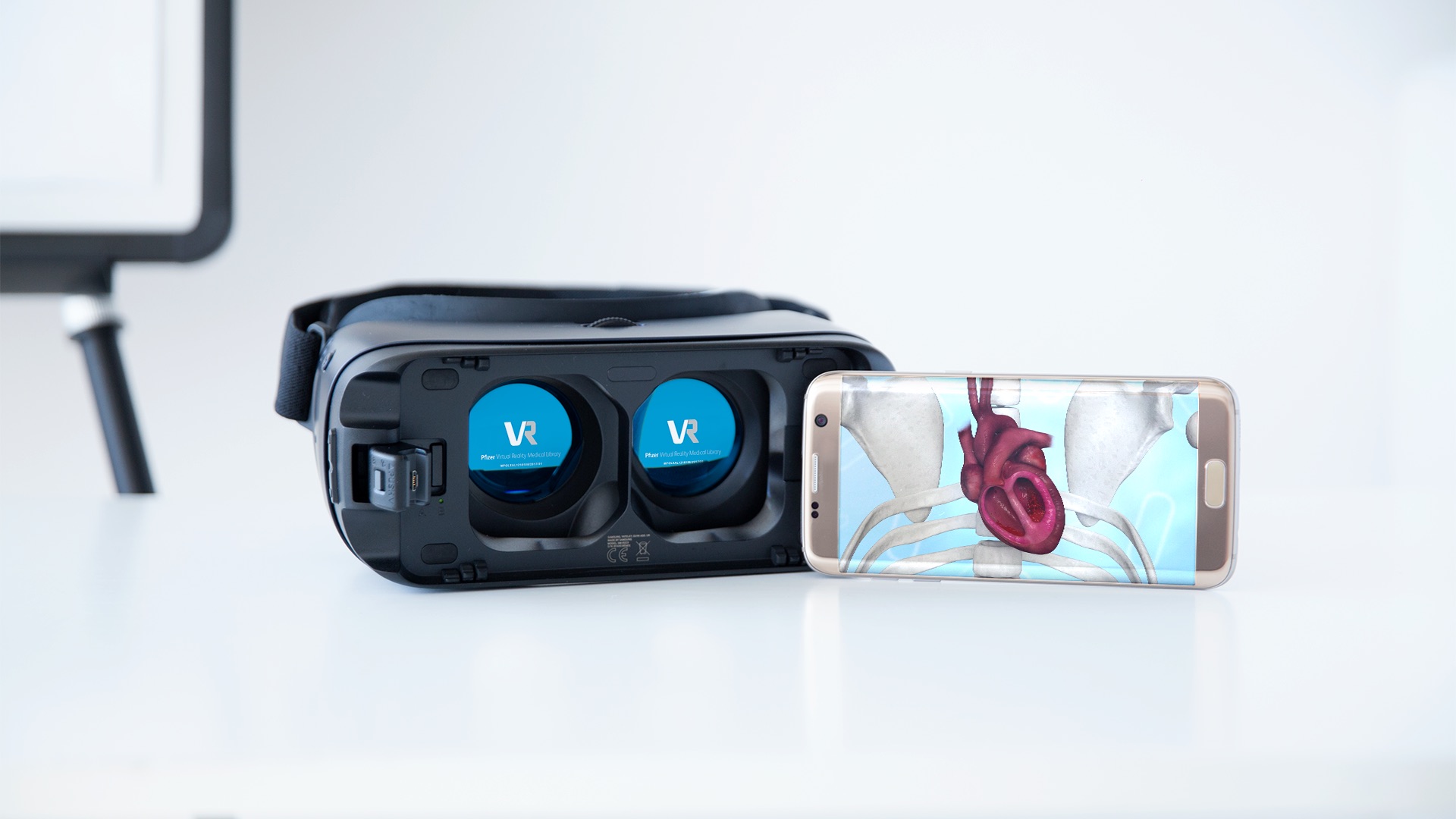Virtual reality in pharma marketing
Virtual reality applications help to engage, discover, and play.

Healthcare professional with virtual reality googles.
Creating first virtual reality application
In 2017, Connectmedica created the first high-quality virtual reality project for Pfizer and Adamed. Our goal each time was to help our clients improve the quality of the presentation of complex topics using the new and more effective toolkit. We worked on the presentation of chemical processes in the human body as well as on improving the understanding of patient diseases.

Our steps for successful implementation
Set clear goals
Determine the goal of your presentation: education or entertainment.
Choose proper appliances
Assign the best VR set for the planned activity - whether it's an event or a consultation. For doctors or patients.
Planning and testing
Time and budget are essential to achieve the required effects. It pays to think twice about your visual and interactive requirements. Creating VR is a costly process.
Development and training
Our developers and design team start working on your application. We use an agile approach, so your team has the opportunity to improve and adapt the initial plans to the executed results. When you are ready, our customer support team launches a training program at your company to familiarize all employees with the new technology. Finally, we help purchase and distribute the necessary equipment to representatives or events.

Example of Pfizer virtual reality application
VR for your brand
You may be wondering if VR sets you apart from your competitors or if it is a mature technology. VR projects are in fact already mainstream technology in gaming, architecture, and engineering. To name a few market leaders like Microsoft Hololens or Meta (aka Facebook) Oculus. Therefore, health professionals will perceive your VR application as an interesting and prominent element of your communication mix.